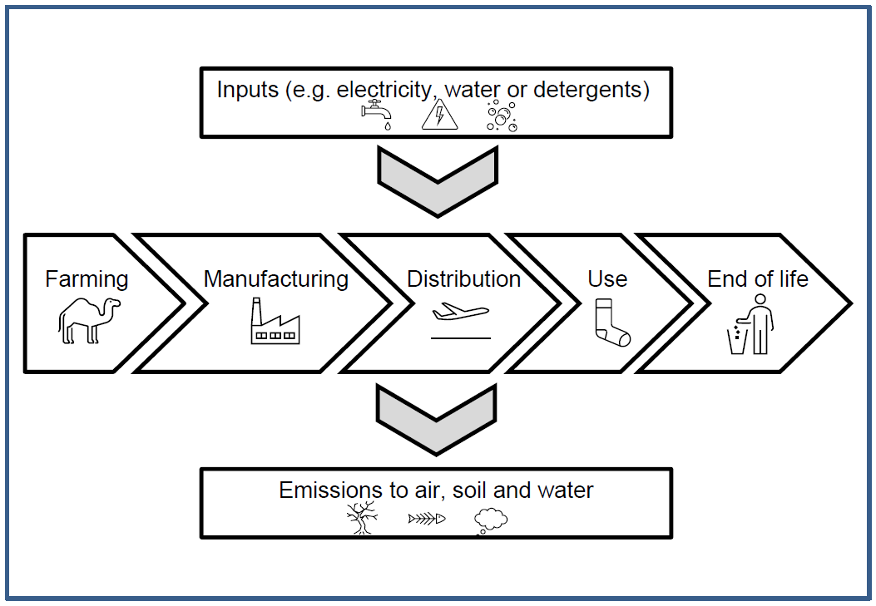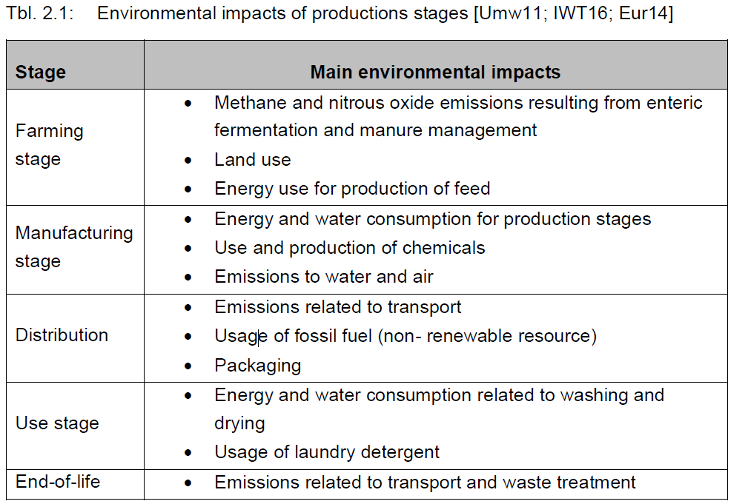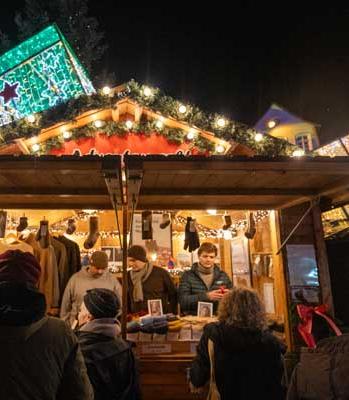All facts and figures in detail
The production of clothing also raises questions about its environmental impact.
To analyze the impact of production and transportation, we present a life cycle analysis of a pair of socks.
The life cycle of a pair of socks
A life cycle assessment (LCA) evaluates the sustainability of products based on their environmental performance. At each stage of the life cycle of a textile garment, there are environmental impacts. We have carried out an LCA to assess these.
The aim was to quantify and evaluate the environmental impact of a wool sock made from camel, sheep and yak wool during its life cycle. The garment is manufactured in Mongolia and sold in Germany.


What negative effects can arise?
Together with our producers and the Institute of Textile Technology at RWTH Aachen University, we launched a master's thesis in 2019 to get to the bottom of this question. Here we disclose all the figures and show the water consumption, land use and CO2 emissions that result from the life of a pair of socks.
This table shows the environmental impact of all phases of animal husbandry, production, distribution, use and disposal of a pair of socks.

What impact does a pair of wool socks have on the climate?
We have summarized the three most important parameters of the LCA in this table. The result of the master's thesis shows that the majority of CO2 emissions are generated during the digestion process in the life of a camel and yak. The proportion of transportation is relatively low in comparison.
The digestion of the animals in particular causes emissions from the methane that is released during the digestion process. However, the animals are not mainly kept for meat production, as is the case in the food industry, but are native to Mongolia in their numbers.
Impacts by selected categories for the entire life cycle of a pair of wool socks. (ReciPe 2016 midpoint methodology)










